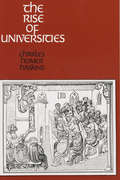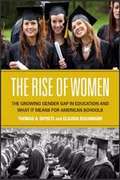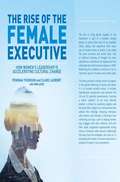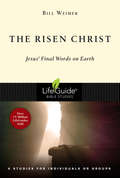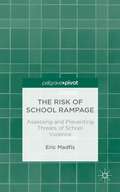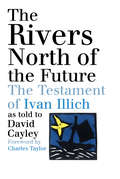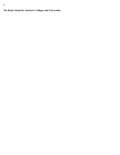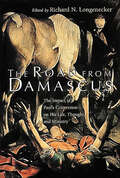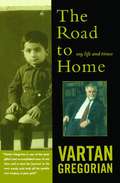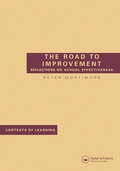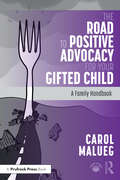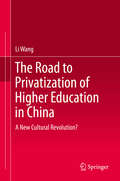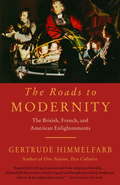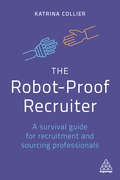- Table View
- List View
The Rise of Intelligent Machines: A Multi-disciplinary Perspective from Industry and Impact on Higher Education
by Nitin IndurkhyaA fascinating shift marks the journey of technological evolution. Historically, humans were trained to build and operate machines. This education emphasised mechanical skills, logical thinking, and problem-solving abilities, laying the groundwork for the following industrial revolutions. Early machines, from the steam engine to the assembly line, were designed and maintained by skilled human workers, reflecting a one-way relationship where humans were the creators and controllers of machines.Today, we stand on the brink of a new paradigm. Advanced artificial intelligence (AI) systems and generative AI tools are not just aiding human tasks but are also capable of educating and guiding humans. These intelligent machines can analyse vast amounts of data, provide personalised learning experiences, and generate creative content. The transformation from humans building machines to machines educating humans signifies a profound shift in our technological landscape, impacting industries.As editors, we are united by a profound conviction that bridging the gap between industry and higher education is imperative in the face of rapid advancements in generative AI and innovations across various industries. This connection is crucial to equipping graduates and young professionals with the skills to innovate and excel in the future workforce. Through this multidisciplinary exploration, The Rise of Intelligent Machines aims to provide readers with an understanding of AI's transformative potential and the strategies needed to harness its benefits for industry and education.Every chapter reflects our shared passion for AI’s potential and close industry-higher education collaboration, and we hope that our work inspires you to embrace the opportunities and challenges of the future with curiosity and confidence.
The Rise of Universities
by Charles Homer Haskins Lionel S. Lewis"The republication of Charles Homer Haskins 'The Rise of Universities is cause for celebration among historians of higher education and among medievalists of all disciplines. . . Haskins' argument is a powerful one: that today's university system is a direct (and immediate) descendent of the collections of scholars who gathered around master teachers in the great cities of Europe during the twelfth and thirteenth centuries. . . [His thesis was profound for its time and remains the guiding interpretation of medieval universities. " --Library Quarterly
The Rise of Universities
by Charles Homer Haskins Theodor E. MommsenThe origin and nature of the earliest universities are the subjects of this famous and witty set of lectures by the man whom eminent scholars have called "without exaggeration . . . the soul of the renascence of medieval studies in the United States." Great as the differences are between the earliest universities and those of today, the fact remains, says Professor Haskins, the "the university of the twentieth century is the lineal descendant of medieval Paris and Bologna." In demonstrating this fact, he brings to life the institutions, instruction, professors, and students of the Middle Ages.
The Rise of Universities
by Charles Homer HaskinsAt the time of its publication in 1923, Charles Homer Haskins' The Rise of Universities was considered remarkable for its erudition, succinctness, and balance. The his-torian Theodor Mommsen described it as "a work which has remained unsurpassed in the conciseness and vividness of its account." Eight decades after its appearance, it remains fresh and informative. It has not been surpassed, and is as invaluable as ever.Haskins traces the rise of the mediaeval university as one phase of the intellectual awakening in Europe in the late Middle Ages, in an effort to broaden our understanding of "the ancient and universal company of scholars." In the depth and breadth of its analysis, there is no better portrait of universities during their infancy in the Middle Ages. With great detail and preci-sion, Haskins describes the university's curriculum, teaching, teachers, and students. Drawing deeply on his knowledge as one of the leading mediaeval scholars of his day, he provides an exceptionally vivid picture of student life of tht time, through his analysis of their manuals, letters, and poetry. The Rise of Universities goes far beyond its central subject to offer a broad description of the social conditions in which universities took root and flourished. At the same time, one cannot read Haskins without seeing the influences of the mediaeval university on contemporary institutions of higher learning. The Rise of Universities reminds us that the univer-sity has not only been a crucible fostering intellectual inquiry and creativity, but continues after eight hundred years to be a center of teaching and learning.In his new introduction, Lionel S. Lewis develops Haskins' passing observation that "the university of the twentieth cen-tury is the lineal descendant of mediaeval Paris and Bologna," and considers the question of why universities came into being at the particular time in history when they did. The Rise of the Universiti
The Rise of Women: The Growing Gender Gap in Education and What it Means for American Schools
by Claudia Buchmann Thomas A. DipreteWhile powerful gender inequalities remain in American society, women have made substantial gains and now largely surpass men in one crucial arena: education. Women now outperform men academically at all levels of school, and are more likely to obtain college degrees and enroll in graduate school. What accounts for this enormous reversal in the gender education gap? In The Rise of Women: The Growing Gender Gap in Education and What It Means for American Schools, Thomas DiPrete and Claudia Buchmann provide a detailed and accessible account of women’s educational advantage and suggest new strategies to improve schooling outcomes for both boys and girls. The Rise of Women opens with a masterful overview of the broader societal changes that accompanied the change in gender trends in higher education. The rise of egalitarian gender norms and a growing demand for college-educated workers allowed more women to enroll in colleges and universities nationwide. As this shift occurred, women quickly reversed the historical male advantage in education. By 2010, young women in their mid-twenties surpassed their male counterparts in earning college degrees by more than eight percentage points. The authors, however, reveal an important exception: While women have achieved parity in fields such as medicine and the law, they lag far behind men in engineering and physical science degrees. To explain these trends, The Rise of Women charts the performance of boys and girls over the course of their schooling. At each stage in the education process, they consider the gender-specific impact of factors such as families, schools, peers, race and class. Important differences emerge as early as kindergarten, where girls show higher levels of essential learning skills such as persistence and self-control. Girls also derive more intrinsic gratification from performing well on a day-to-day basis, a crucial advantage in the learning process. By contrast, boys must often navigate a conflict between their emerging masculine identity and a strong attachment to school. Families and peers play a crucial role at this juncture. The authors show the gender gap in educational attainment between children in the same families tends to be lower when the father is present and more highly educated. A strong academic climate, both among friends and at home, also tends to erode stereotypes that disconnect academic prowess and a healthy, masculine identity. Similarly, high schools with strong science curricula reduce the power of gender stereotypes concerning science and technology and encourage girls to major in scientific fields. As the value of a highly skilled workforce continues to grow, The Rise of Women argues that understanding the source and extent of the gender gap in higher education is essential to improving our schools and the economy. With its rigorous data and clear recommendations, this volume illuminates new ground for future education policies and research.
The Rise of Writing
by Deborah BrandtMillions of Americans routinely spend half their working day or more with their hands on keyboards and their minds on audiences - writing so much, in fact, that they have less time and appetite for reading. In this highly anticipated sequel to her award-winning Literacy in American Lives, Deborah Brandt moves beyond laments about the decline of reading to focus on the rise of writing. What happens when writing overtakes reading as the basis of people's daily literate experience? How does a societal shift toward writing affect the ways that people develop their literacy and understand its value? Drawing on recent interviews with people who write every day, Brandt explores this major turn in the development of mass literacy and examines the serious challenges it poses for America's educational mission and civic health.
The Rise of the Female Executive: How Women's Leadership is Accelerating Cultural Change
by Tom Lloyd Peninah Thomson Clare LaurentProvides a timely review of gender equality in the boardroom, and through interviews with mentors and mentees it illustrates how mentoring can play a part in helping women stay engaged in their career. This book includes international comparisons and an examination of the UK and EU political environments.
The Rise of the Research University: A Sourcebook
by Louis Menand Paul Reitter Chad WellmonThe modern research university is a global institution with a rich history that stretches into an ivy-laden past, but for as much as we think we know about that past, most of the writings that have recorded it are scattered across many archives and, in many cases, have yet to be translated into English. With this book, Paul Reitter, Chad Wellmon, and Louis Menand bring a wealth of these important texts together, assembling a fascinating collection of primary sources—many translated into English for the first time—that outline what would become the university as we know it. The editors focus on the development of American universities such as Cornell, Johns Hopkins, Harvard, and the Universities of Chicago, California, and Michigan. Looking to Germany, they translate a number of seminal sources that formulate the shape and purpose of the university and place them next to hard-to-find English-language texts that took the German university as their inspiration, one that they creatively adapted, often against stiff resistance. Enriching these texts with short but insightful essays that contextualize their importance, the editors offer an accessible portrait of the early research university, one that provides invaluable insights not only into the historical development of higher learning but also its role in modern society.
The Risen Christ: Jesus' Final Words on Earth (Single User License LBS)
by Bill WeimerJesus' words from the cross are not Jesus' last words on earth. Jesus appeared to his fearful and questioning disciples, encouraged them, and gave them his final instructions after his resurrection from the dead. In various settings and at different times, Jesus interacted with many of his followers to show them he was alive. His postresurrection dialogues with these women and men truly are Jesus' last words! In this eight-session LifeGuide, you will meet the risen Jesus Christ and hear his words. May he encounter you in your life situations, encourage your faith and trust in him, and excite you about engaging others in discussions about Jesus. For over three decades LifeGuide Bible Studies have provided solid biblical content and raised thought-provoking questions—making for a one-of-a-kind Bible study experience for individuals and groups. This series has more than 130 titles on Old and New Testament books, character studies, and topical studies.
The Risk of School Rampage: Assessing and Preventing Threats of School Violence
by Eric MadfisBy examining averted school rampage incidents, this work addresses problematic gaps in school violence scholarship and advances existing knowledge about mass murder, violence prevention, bystander intervention, threat assessment, and disciplinary policy in school contexts.
The Risky Business of Education Policy (Kappa Delta Pi Co-Publications)
by Christopher H. TienkenThe Risky Business of Education Policy focuses commentary and analysis on some of the most pressing policy challenges facing public school educators and those invested in a healthy, vibrant public-school system. The book shares insights and makes recommendations from leading scholar-practitioners, namely from educational leadership and science education, on ways to ponder, navigate, and challenge serious policy issues. The chapters present important policy topics and critical analysis of the topics from the authorial perspective of experienced educators leading the preparation of future school leaders and teachers. Through fast paced, user-friendly chapters, contributors grapple with an education reform policy issue of the day, reflecting what is contentious territory while wading through it. These educational researchers also make evidence-informed practical recommendations for educators and policymakers on how to better approach the policy challenges presented, so public education can be improved for all children. Each chapter contains stimulating ideas, useful information, and practical tips for school practitioners, higher education faculty, and constituent groups.
The Rivers North of the Future: The Testament Of Ivan Illich
by David CayleyIn The Rivers North of the Future David Cayley has compiled Ivan Illich's moving and insightful thoughts concerning the fate of the Christian Gospel. Illich's view, which could be summed up as the corruption of the best is the worst, is that Jesus' call to love more abundantly became the basis for new forms of power in the hands of those who organized and administered this New Testament. Illich also explores the invention of technology, the road from hospitality to the hospital, the criminalization of sin, the church as the template of the modern state, and the death of nature. Illich's analysis of contemporary society as a congealed and corrupted Christianity is both a bold historical hypothesis and a call to believers to re-invent the Christian church. With a foreword by Charles Taylor. Ivan Illich (1926-2002) was a brilliant polymath, an iconoclastic thinker, and a prolific writer. He was a priest, vice-rector of a university, founder of the Centre for Intercultural Documentation in Cuernavaca, Mexico, and author of numerous books, including Deschooling Society, Tools for Conviviality, Energy and Equity, and Medical Nemesis.
The Road Ahead for America's Colleges and Universities
by Robert B. Archibald David H. FeldmanThe US higher education system is on the verge of a revolution, so some observers claim. Archibald and Feldman, leading analysts, provide an incisive overview of the challenges facing and possibilities for America's universities and colleges in their training future generations. And they demonstrate that our higher education system is resilient and adaptable enough to weather the internal, external, and technological threats without changing campuses beyond recognition.
The Road Taken: An Archaeologist’s Journey to the Land of the Bible
by Seymour (Sy) GitinIn this fascinating book, Seymour (Sy) Gitin recounts his life’s journey, from his childhood in 1940s Buffalo, New York, to a storied career as an archaeologist working and living in Israel.Over the course of his life, Sy served as a rabbi in Los Angeles and as US Air Force Chaplain, starred in an Israeli movie, trained as an archaeologist, and eventually became the Director of the W. F. Albright Institute of Archaeological Research in Jerusalem, an institution he led for thirty-four years. As an archaeologist, Sy encouraged American participation in the archaeology of ancient Israel, fostered the development of the Palestinian archaeological community, and conducted valuable field work at Tell Gezer and Tel Miqne-Ekron. His tale is full of entertaining vignettes involving the people that he encountered along the way, including many of the pioneers in the field—W. F. Albright, Nelson Glueck, Yigael Yadin, Benjamin Mazar, and Trude Dothan, as well as current protagonists William G. Dever, Israel Finkelstein, and Amihai Mazar.Readers will enjoy Sy’s humorous and engaging stories: rationing out seder wine on a military base following the great Alaskan earthquake only to learn that soldiers were threatening to use it to brush their teeth, encounters with Senator Daniel Patrick Moynihan and US Ambassador Thomas Pickering, and the many colorful experiences he had with fellow scholars through the years.An engaging and entertaining recounting of a remarkably lived life, The Road Taken is a revealing look at being Jewish in America and Israel from the 1940s through today and an eye-opening look at the often controversial development of biblical archaeology.
The Road Taken: An Archaeologist’s Journey to the Land of the Bible (Royal Inscriptions of the Neo-Assyrian Period)
by Seymour (Sy) GitinIn this fascinating book, Seymour (Sy) Gitin recounts his life’s journey, from his childhood in 1940s Buffalo, New York, to a storied career as an archaeologist working and living in Israel.Over the course of his life, Sy served as a rabbi in Los Angeles and as US Air Force Chaplain, starred in an Israeli movie, trained as an archaeologist, and eventually became the Director of the W. F. Albright Institute of Archaeological Research in Jerusalem, an institution he led for thirty-four years. As an archaeologist, Sy encouraged American participation in the archaeology of ancient Israel, fostered the development of the Palestinian archaeological community, and conducted valuable field work at Tell Gezer and Tel Miqne-Ekron. His tale is full of entertaining vignettes involving the people that he encountered along the way, including many of the pioneers in the field—W. F. Albright, Nelson Glueck, Yigael Yadin, Benjamin Mazar, and Trude Dothan, as well as current protagonists William G. Dever, Israel Finkelstein, and Amihai Mazar.Readers will enjoy Sy’s humorous and engaging stories: rationing out seder wine on a military base following the great Alaskan earthquake only to learn that soldiers were threatening to use it to brush their teeth, encounters with Senator Daniel Patrick Moynihan and US Ambassador Thomas Pickering, and the many colorful experiences he had with fellow scholars through the years.An engaging and entertaining recounting of a remarkably lived life, The Road Taken is a revealing look at being Jewish in America and Israel from the 1940s through today and an eye-opening look at the often controversial development of biblical archaeology.
The Road from Damascus: The Impact of Paul's Conversion on His Life, Thought, and Ministry (McMaster New Testament Studies (MNTS))
by Richard N. LongeneckerConversion is intrinsic to the Christian religion. The most remarkable conversion recorded in the New Testament is that of Paul, and most Christians consider Christ's encounter with Paul to be a prototype of Christian conversion generally. This collection of eleven essays gives Paul's conversion a firmer rootage in the biblical materials while also emphasizing personal application. The contributors examine the nature of Paul's Damascus Road experience and the impact of that experience on his thought and ministry, and explore how Paul's experience functions as a paradigm for Christian thought and action today.Contributors: Bruce Corley, Terence L. Donaldson, James D. G. Dunn, Gordon D. Fee, Judith M. Gundry-Volf, G. Walter Hansen, Seyoon Kim, Bruce W. Longenecker, Richard N. Longenecker, I. Howard Marshall, Stephen Westerholm.
The Road to Home
by Vartan GregorianIn this humorous, learned, and moving memoir, Vartan Gregorian recounts his journey from an impoverished childhood as a Christian Armenian in Muslim Tabriz to cultured citizen of the world. Gregorian's odyssey begins in an obscure poor quarter of a provincial city (thought by some to be the location of the Garden of Eden). Childhood centered on his brilliant, beloved, illiterate grandmother who taught him so much, the beauty of Church, school, American movies, and the larger world he read about in his borrowed books. From there, he continued on to a Beirut lycée, Stanford University, and the presidencies of the New York Public Library, Brown University, and Carnegie Corporation. Like Jimmy Carter in An Hour Before Daylight, and in the tradition of Nabokov, Jill Ker Conway, and V. S. Naipaul, he tells us that education is an openness to everything, and describes his public and private life as one education after another. This is a love story about life.
The Road to Improvement (Contexts of Learning)
by Peter MortimoreThis is a collection of 19 articles charting developments in school effectiveness research, both on the evaluative and reflective side, and the emergence from it of pro-active school improvement ideas and initiatives.
The Road to Positive Advocacy for Your Gifted Child: A Family Handbook
by Carol MaluegThe journey from preschool to independent adulthood can present a tricky route to navigate when you are the parent or caregiver of a gifted or multi-exceptional child. The job of advocating for these children is not about providing the ‘perfect’ education, but about making the best choices within the given constraints.Starting with the earliest school years, this book provides caregivers with the resources they will need to positively advocate for their gifted child and to help their child become a strong self-advocate. Full of practical tips, this book answers questions such as: How can I meet other parents raising kids like mine?, Why can’t schools meet the needs of my child?, How can I productively communicate with the educational team?, and more!Providing expert guidance on collecting resources, expanding your network, and practicing and modeling positive advocacy skills, this book will empower caregivers of gifted of twice-exceptional children to trust their instincts and understand their options when it comes to their children’s education.
The Road to Privatization of Higher Education in China
by Li WangThis book makes both empirical and conceptual contributions to the debate on privatization of higher education in China. Empirically, it aims to fill a gap in our knowledge of privatization of higher education in North China. To this end, Beijing was chosen as a case for analysis, and nine local higher educational institutions were visited. The case study strategy is also complemented by an extensive review of national policies to reveal problems beyond the specific case of Beijing and of national concern. The effects of the cultural and socioeconomic background and the unique state-party controlling system on higher education management are stressed. Conceptually, most existing studies on privatization of higher education in China adopt a policy analysis approach, while research on privatization of other public sectors or in other countries is frequently guided by economic theories. This book thus seeks to combine both social policy and econometric approaches to provide a systematic and detailed investigation of the privatization process in the context of higher education. It also improves examines the applicability of western theories in the Chinese context.
The Roads to Modernity
by Gertrude HimmelfarbIn an elegant, eminently readable work, one of our most distinguished intellectual historians gives us a brilliant revisionist history. The Roads to Modernity reclaims the Enlightenment-an extraordinary time bursting with new ideas about human nature, politics, society, and religion--from historians who have downgraded its importance and from scholars who have given preeminence to the Enlightenment in France over concurrent movements in England and America.Contrasting the Enlightenments in the three nations, Himmelfarb demonstrates the primacy and wisdom of the British, exemplified in such thinkers as Adam Smith, David Hume, and Edmund Burke, as well as the unique and enduring contributions of the American Founders. It is their Enlightenments, she argues, that created a social ethic-humane, compassionate, and realistic-that still resonates strongly today, in America perhaps even more than in Europe.The Roads to Modernity is a remarkable and illuminating contribution to the history of ideas.From the Trade Paperback edition.
The Roberts Court and Public Schools
by Brett A. GeierThis unique and timely book offers a synthesis, analysis, and evaluation of education-related rulings of the US Supreme Court from 2005 to the present. Throughout the course of the twentieth century into the twenty-first century, the Supreme Court issued rulings, which frequently vacillate based on the political composition of the justices who sit on the bench. Chapters will cover both an overview of the role of Supreme Court rulings in school policy and the court’s transformation in the late twentieth century into the present day. These themes will be converted into robust chapters which will provide a legal analysis of the Roberts Court years, and an evaluation of the jurisprudence and its practical effect on public schools.
The Robot Factory: Pseudoscience In Education And Its Threat To American Democracy
by Joseph GanemThis book exposes a disturbing misuse of the scientific method to advance policies and agendas that are in fact detrimental to both science and education. The author, a physics professor, examines two related trends in education – the practice of “data-driven” reform and the disparaging of the traditional liberal arts in favor of programs with a heavy emphasis on science and technology. Many of the reforms being foisted on educators have more in common with pseudo-science than real science. The reduction of education to a commodity, and the shilling of science as a means to enhance corporate profits, lead to an impoverished and stunted understanding of science in particular, and of education in general.How is it possible for: • schools with all students learning at grade-level to be rated as failing?• teachers to be rated as ineffective after all their students meet their learning outcomes?• rising grade-school math standards to result in more college students needing remedial math?• politicians to disparage scientists and their results but argue that more students should study science?These bizarre outcomes have happened and are the result of an education system that misuses and misrepresents math and science in the classroom and in crafting education policies. This book exposes the flawed and fallacious thinking that is damaging education at all levels throughout the United States, and makes a compelling case for rethinking the standardized, optimized, and quantified approaches in vogue in education today to accommodate the different needs of individual teachers and students.
The Robot-Proof Recruiter: A Survival Guide for Recruitment and Sourcing Professionals
by Katrina CollierIn a world of work where recruiters are constantly hearing that their role is at risk from AI, robotics and chatbots, effectively attracting and recruiting the right people has never been more important. Leveraging the power of social media and digital sourcing strategies is only part of the solution and simply posting a job on Facebook or sending a LinkedIn InMail is no longer enough. The Robot-Proof Recruiter shows recruiters how to use the tools that reveal information that can be used to grab a potential candidate's attention in the overwhelming volume of information online. Full of expert guidance and practical tips, this book explains what works, what doesn't and how you can stand out and recruit effectively in a world of technology overload.The Robot-Proof Recruiter will enable readers to become the recruiters that candidates trust and the ones that they want to talk to. It contains essential guidance on how to overcome obstacles including how to recruit without an existing social media presence, how to work effectively with hiring managers to improve the candidate experience, and how to use technology to support the candidate's journey from initial outreach, to application, to employee, and through to alumni. This is an indispensable book for all recruitment professionals and HR practitioners looking to recruit the right people for their organisation.


